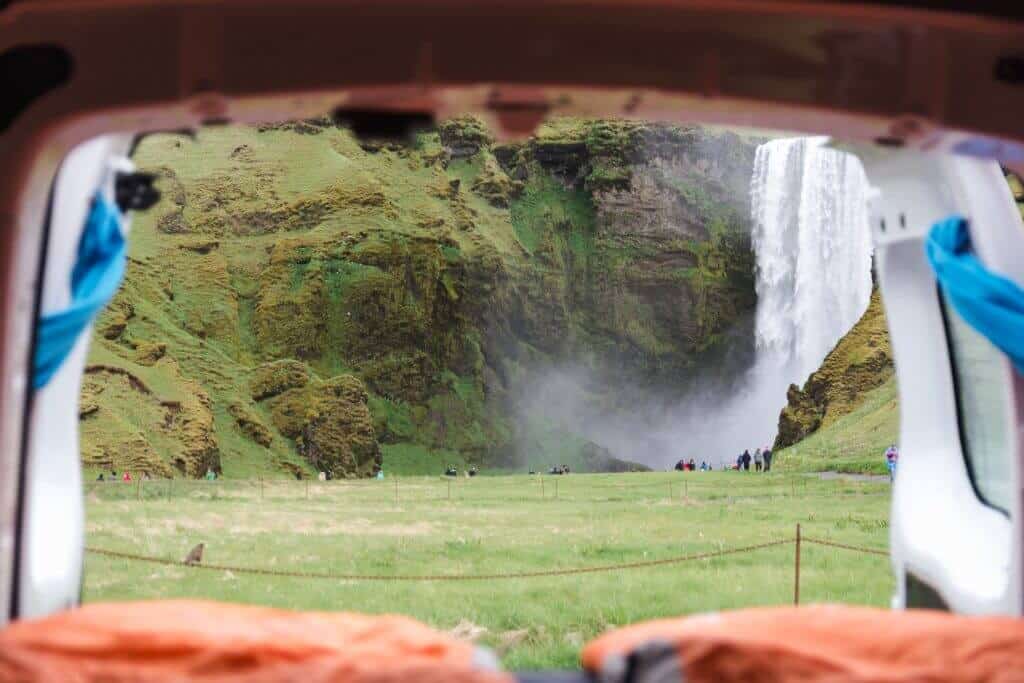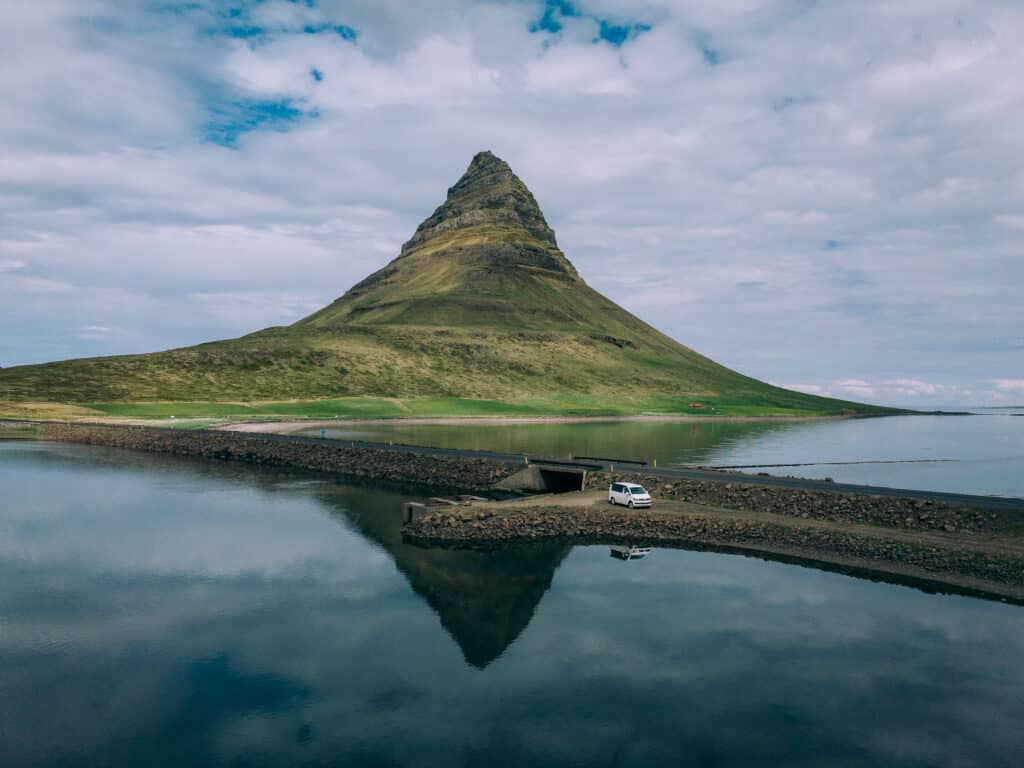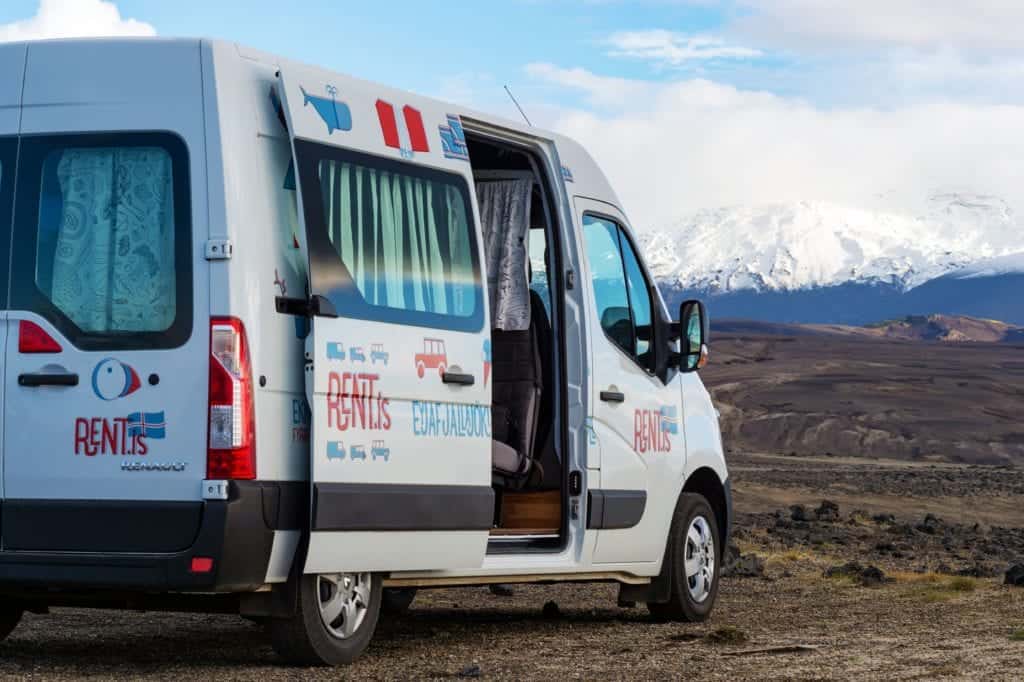Iceland has become one of the most sought-after holiday destinations worldwide, attracting a steady stream of travelers each year. However, with the surge in tourism and a booming economy, understanding the best time of year to visit Iceland is essential.
The ideal timing for your trip will depend on what you want to see and the activities you wish to experience. Before you start packing your bags for your dream adventure here’s some information to help you choose the best time to travel to Iceland.
The Different Iceland Travel Seasons
Although Iceland is a Nordic country, its climate is surprisingly diverse, offering distinct experiences depending on the time of year you visit. Iceland’s weather ranges from pleasant, mild Icelandic summers from June to August, to crisp, picturesque winters from December to February.
But how else do the seasons differ? Let’s explore the key benefits and drawbacks of each season in Iceland to help you choose the best time of the year to go to Iceland.
High Season
You can’t go wrong with planning your trip during the high season, which usually lasts for most of the summer. The high season in Iceland (June-August) is the most popular time for visitors, offering the best of everything the country has to offer.
During these months, the days are long, the weather is mild, and the landscapes are lush and vibrant. It’s a fantastic time to explore Iceland’s natural beauty, hike its famous trails, and experience the cultural buzz of festivals and local events. However, the popularity of this season also comes with some challenges. Let’s dive into the benefits and drawbacks of visiting Iceland during the high season.
Pros:
- Mild weather: Average temperatures range from 10°C to 15°C (50°F to 59°F), making summer the best time to visit Reykjavik (Iceland’s capital city) or try different outdoor activities
- Long daylight hours: With up to 24 hours of daylight during the summer solstice, you have more time to explore.
- Summer festivals and events: Summer is the peak season for local festivals, cultural events, and concerts.
- Access to popular sites: Most attractions, including the Golden Circle, national parks, and hiking trails, are fully accessible. If you’re looking for an off-the-beaten-track adventure, hit the road in an Iceland camper rental to tour the more remote and pristine corners of the country.
- Wildlife viewing: Summer is a great time to see puffins, blue whales, and other iconic Iceland wildlife.
Cons:
- Crowds: Popular tourist destinations can be crowded, as summer is the busiest time of the year for tourists. Accommodations may also be harder to book.
- Higher prices: Flights, hotels, and tours are typically more expensive during peak summer months.
- Busy roads: Expect heavy traffic around popular attractions and the roads leading to them.
Iceland Shoulder Season
In Iceland, the shoulder season last from September to October and from March to May. This period between peak and off-season offers fewer crowds and lower prices, making it one of the best times to visit Iceland. During this seasonal lull, Iceland begins to shed its winter chill, and the landscape is either blossoming with spring flowers or adorned with rich, golden hues as fall rolls around.
Neither of Iceland’s shoulder seasons attracts the same number of tourists as the middle of the summer. However, you can still enjoy some of the same experiences that the high season offers. Not to mention, there are fewer crowds of tourists and unique additional activities. However, the weather can be unpredictable, and some attractions begin to close as the season transitions. Let’s take a closer look at the advantages and disadvantages of visiting Iceland during the shoulder season.
Pros:
- Milder weather: Temperatures are still relatively comfortable, ranging from 5°C to 10°C (41°F to 50°F), and the weather is less unpredictable.
- Fewer tourists: Enjoy a quieter experience compared to the high season, especially at major tourist attractions.
- Lower prices: Accommodations and tours tend to be more affordable than in the peak summer months.
- Great for photography: The changing landscape, with blooming flowers in May and fall colors in September, makes for stunning photos of an already incredible wilderness.
Cons:
- Unpredictable weather: While milder, the weather can still be quite variable, and there’s a chance of rain or colder conditions.
- Limited daylight in September: The daylight hours are shorter compared to summer, especially in September, so you’ll have less time to explore each day.
- Some attractions close early: Certain tours and remote areas may begin to close as the high season winds down.

Low Season
From mid-October to April, Iceland enters its low season, marked by colder temperatures, shorter days, and fewer crowds. While the weather may be challenging, this is the best time to experience the country’s winter wonderland, whether that’s traversing snowy landscapes, spelunking in ice caves, or viewing the stunning Northern Lights.
If you’re seeking solitude and a more intimate connection with Iceland’s natural beauty, the low season might be the best time for Iceland adventures. But, with unpredictable weather and limited daylight, it requires a bit more preparation and flexibility. Here’s a closer look at what to expect when visiting Iceland during the low season.
Pros:
- Winter wonderland: The low season is ideal for seeing the Aurora Borealis and picturesque snow-covered landscapes.
- Peaceful and serene: Enjoy Iceland’s natural attractions without the crowds, giving you a more intimate experience.
- Lower prices: Flights, accommodations, and tours are typically much cheaper during the low season.
- Adventure abounds: Great for winter adventures like snowmobiling, glacier hikes, and ice climbing.
Cons:
- Cold weather: Temperatures can dip below freezing, so you’ll need to pack warm clothes to stay comfortable.
- Shorter days: Limited daylight, especially in December and January, reduces the time available for sightseeing.
- Limited access: Some popular tourist sites and roads may be closed due to snow and ice, limiting your travel options.
- Weather unpredictability: Storms and harsh weather conditions can sometimes disrupt travel plans.
The Best Times to Visit Iceland for Popular Activities
Iceland is full of diverse landscapes and natural wonders, and it offers a wide range of activities that cater to every type of traveler — but when is the best time to travel to Iceland? That depends on what you want to experience.
The best time of year to visit Iceland for the most popular experiences largely depends on the season, as each activity is influenced by Iceland’s unique climate. Whether you’re chasing the Northern Lights in winter or hiking through lush green trails in the summer, there’s a perfect time to enjoy your favorite Icelandic adventure.
Northern Lights
The best time to see the Northern Lights in Iceland is during the winter months, from late September to early April. The longer nights and darker skies create optimal conditions for this natural light show. For the best viewing chances, head to areas with minimal light pollution, like Thingvellir National Park or the Westfjords.
Hot Springs
Iceland’s geothermal pools are a year-round attraction, but visiting in the winter adds a special charm. The contrast between the chilly air and the warm waters makes the experience even more magical. Popular springs, such as the Blue Lagoon or Myvatn Nature Baths, are especially inviting during the cooler months. Summer visitors can also enjoy these relaxing spots but should expect more crowds.
Whale Watching
The best time for whale watching in Iceland is from early June to August when migratory species like humpback whales, minke whales, and orcas are most commonly spotted off the coast. The weather is milder during these months, which means more comfortable boat tours, and the long days give you more opportunities for sightseeing. For the ultimate experience, head to locations like Húsavík, known as the whale-watching capital of Iceland.
Hiking
Iceland’s hiking trails are best explored during the summer, from June to September, when the weather is milder, and most of the trails are open. If you’re looking for more challenging treks, the summer months provide access to iconic hikes like the rugged Laugavegur Trail, which takes you through Iceland’s stunning volcanic landscapes. The shoulder season (May and September) offers fewer crowds, making it an ideal time for a quieter hiking experience.
Camping
The best time to visit Iceland for camping is during the summer months when the weather is most accommodating and the days are long. This gives you plenty of time to take in Iceland’s natural wonders, from glaciers to volcanoes. If you’re looking to avoid crowds, exploring Iceland’s campsites during the shoulder season in May and September can offer a relaxing experience with warmer temperatures.
Midnight Sun
The polar day happens during the summer, from late May to mid-July, when the sun doesn’t set and provides 24 hours of daylight. This is the perfect time to enjoy Iceland’s ethereal landscapes. It’s a unique experience, especially for travelers who want to make the most of their time exploring, hiking, or just soaking in the sights under the midnight sun.
Ice Caving
Ice caving is a popular activity in Iceland during the winter months, typically from November to late March when the glacial caverns are at their most accessible. During this time, the glaciers are stable, and the ice formations are vibrant with shades of blue. Some tours may also be available during the shoulder season (September and October), but winter is your best bet for spelunking.
Snowsports
For thrill-seekers, the best time to visit Iceland is from December to March, when the country is covered in snow. This is the prime season for skiing, snowboarding, and snowmobiling, especially in areas like Akureyri and the Highlands. With long days and less unpredictable weather than in November or early spring, this is the best time of year to travel to Iceland for winter sports enthusiasts.
Iceland By Month
Iceland’s unique landscapes and rich culture make it a go-to destination throughout the year, but when is the best time to go to Iceland? From month to month, the experiences you’ll have can vary greatly depending on when you visit. Here’s a breakdown to guide your decision-making.
January
January brings long nights and cold weather, ideal for Northern Lights enthusiasts. With only about 4-5 hours of daylight, it’s a quiet, peaceful time to explore Iceland’s winter landscapes. Prices are lower, but winter sports and geothermal spas remain popular activities.
February
February continues the winter season with cold temperatures and limited daylight. The Northern Lights are still visible on clear nights, and crowds are minimal, offering a tranquil experience. Winter activities like ice caving and soaking in hot springs are also great options. Prices stay low, but be ready for snow and cold weather.
March
March offers a mix of the winter and spring seasons, with around nine hours of daylight. The chance to see both the Northern Lights and the early signs of spring makes it a unique time to visit. Prices start to rise slightly, but crowds are still small, offering a quiet, budget-friendly experience.
April
In April, the days lengthen to about 13 hours, and temperatures begin to rise. While you can still enjoy winter activities like ice caving, hiking becomes more accessible as snow melts. This is a transitional month with moderate prices and smaller crowds compared to summer.
May
May is perfect for those wanting to avoid the high-season crowds but still enjoy mild weather and up to 16 hours of daylight. It’s ideal for sightseeing, hiking, and birdwatching. Blooming landscapes and moderate prices make May a peaceful yet accessible experience.
June
June marks the start of summer, with nearly 24 hours of daylight. It’s the best time for activities like hiking, whale watching, and camping. Though it’s the start of the high season, the vibrant events and long days make it a prime time to visit, albeit at higher prices.
July
July is peak summer in Iceland, with warm weather and endless daylight. It’s the busiest and most expensive month, but it’s perfect for outdoor adventures, festivals, and enjoying the lush landscapes. Expect large crowds but great weather for sightseeing and activities.
August
August continues summer with long days and mild weather. It’s a good time for hiking and spending time outdoors, though the crowds begin to thin toward the end of the month. Prices remain high, but the quieter atmosphere at the tail end of the month can be a plus.
September
September sees mild weather, around 13 hours of daylight, and smaller crowds. The fall colors make it a great time for sightseeing and hiking, and prices are lower compared to summer. It’s also an ideal month to catch the Northern Lights during dark nights.
October
October is when fall enters full swing, with only eight hours of daylight. The Northern Lights are visible, and turning foliage adds beautiful colors to Iceland’s landscapes. Prices are moderate but be prepared for unpredictable weather and fewer available activities due to the approaching winter.
November
November is the start of winter, with only 5-6 hours of daylight and cold temperatures. Fewer visitors mean lower prices, and it’s a good time to experience the Northern Lights. However, activities may be limited due to the weather, though geothermal spas remain a warm retreat.
December
December is winter at its peak, with long nights and snow. Though the days are short (4-5 hours of daylight), it’s the best time for winter activities like ice caving and seeing the Northern Lights. The holiday season brings some crowds and higher prices, but the winter wonderland atmosphere is unmatched.
Icelandic Events for Each Month
Iceland is a country full of unique cultural events throughout the year, offering visitors a chance to experience local traditions, festivals, and celebrations. From music festivals to holiday festivities, here are some key events happening in Iceland each month.
- In January, celebrate Þorrablót, an annual midwinter feast. There, you can taste some of Iceland’s local delicacies.
- February hosts the Winter Light Festival in Reykjavik, where you can enjoy beautiful light installations.
- Enjoy a few pints on March 1st, Iceland’s National Beer Day.
- The first Thursday after April 18th is Sumardagurinn Fyrsti, an ancient Norse celebration marking the end of winter.
- In late May, attend the Vaka Folk Festival in Akureyri to see some of the best folk performers in Europe.
- June marks the beginning of the high season in Iceland. This is also the perfect time to go out to sea and spot some whales.
- For music lovers, July is the best time to visit Iceland, as you can enjoy festivals like Eistnaflug and Bræðslan.
- In August, attend the world-famous Herring Festival. Sample delicious fish dishes together with local drinks and activities.
- Every year, farmers perform réttir, the process of rounding up the sheep after summer – a spectacle worth seeing.
- October is the perfect time to see the Northern Lights – the days become shorter and the lights are more vivid.
- During the darker November days, celebrate the Dagar Myrkurs festival. This local celebration is full of dark dances, spooky stories, and magic shows.
- Iceland knows how to party. It’s the perfect place to cap off the entire year with a New Year’s Eve celebration in Reykjavik.

Explore Iceland with Rent.is
Still deciding which activities and sights you want to explore? No matter what you decide in terms of when to visit Iceland, the best way to experience it is from the driver’s seat.
At Rent.is, we offer comfortable campervans to make your journey unforgettable. Check out our Iceland campervan packing list and book your rental today for an adventure of a lifetime!


